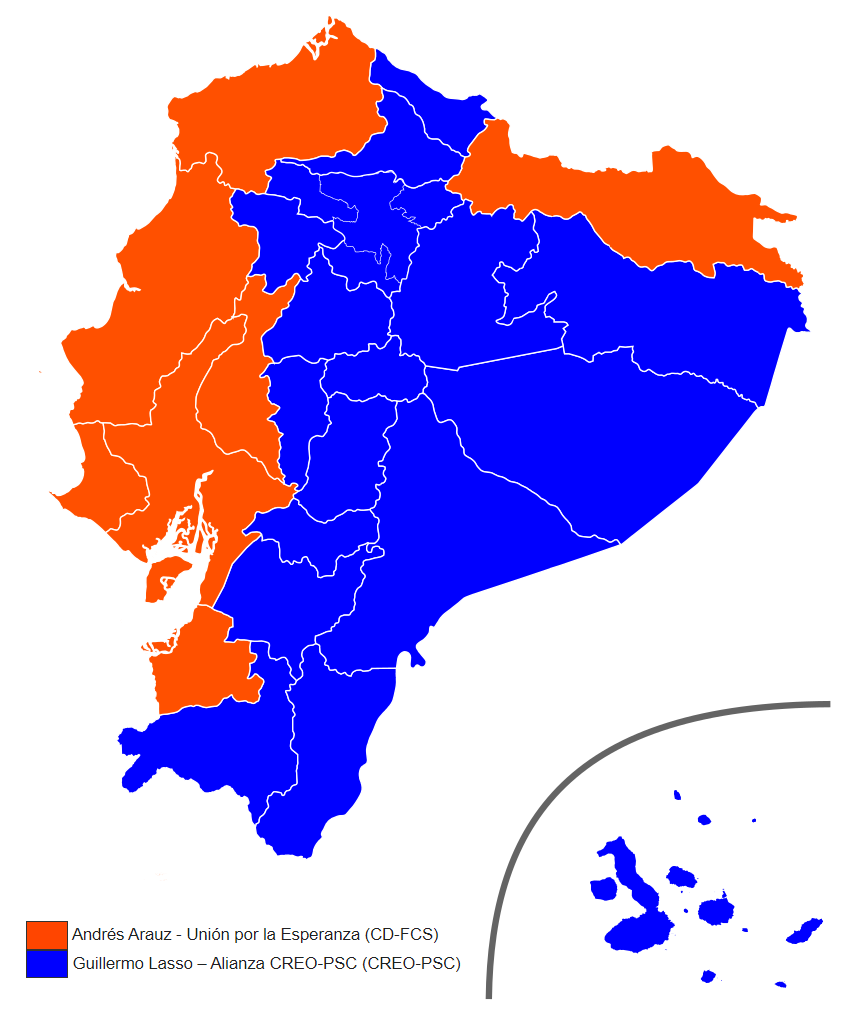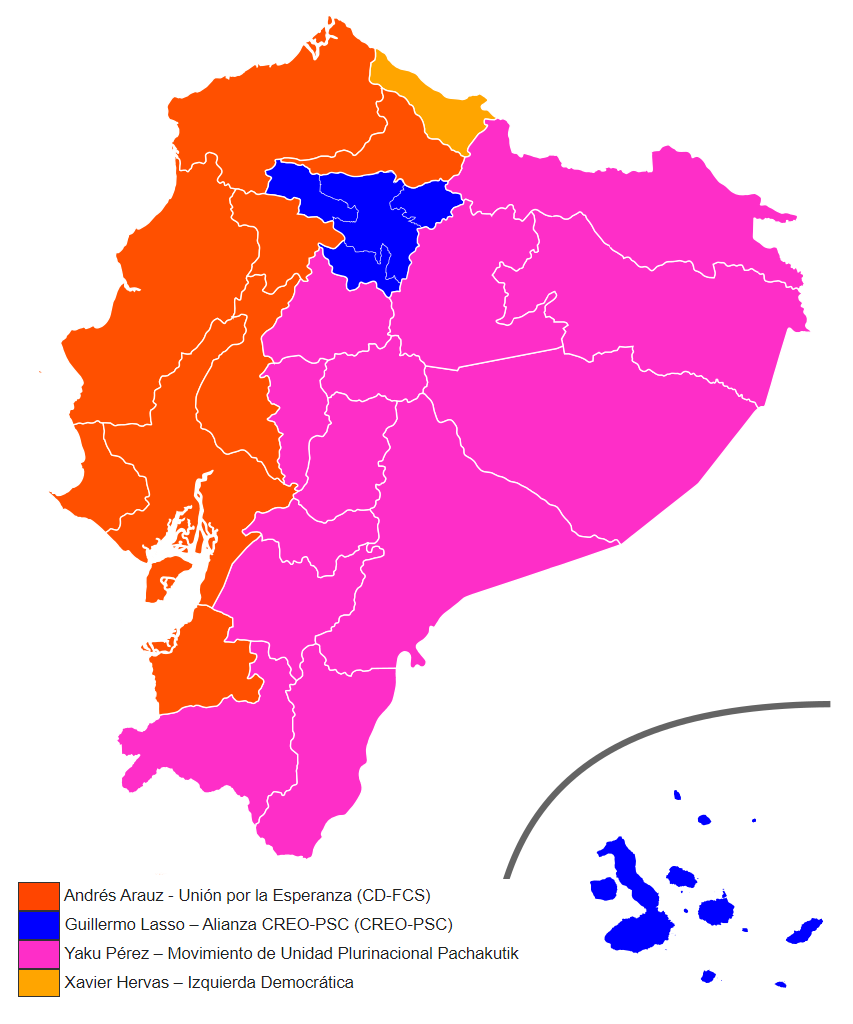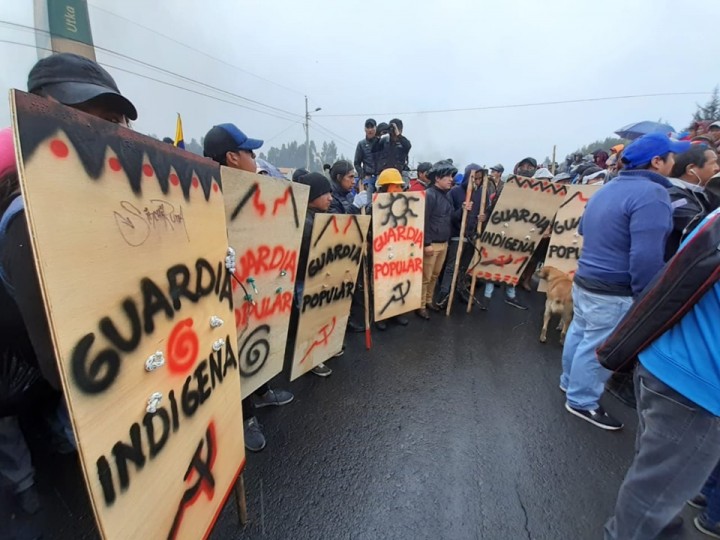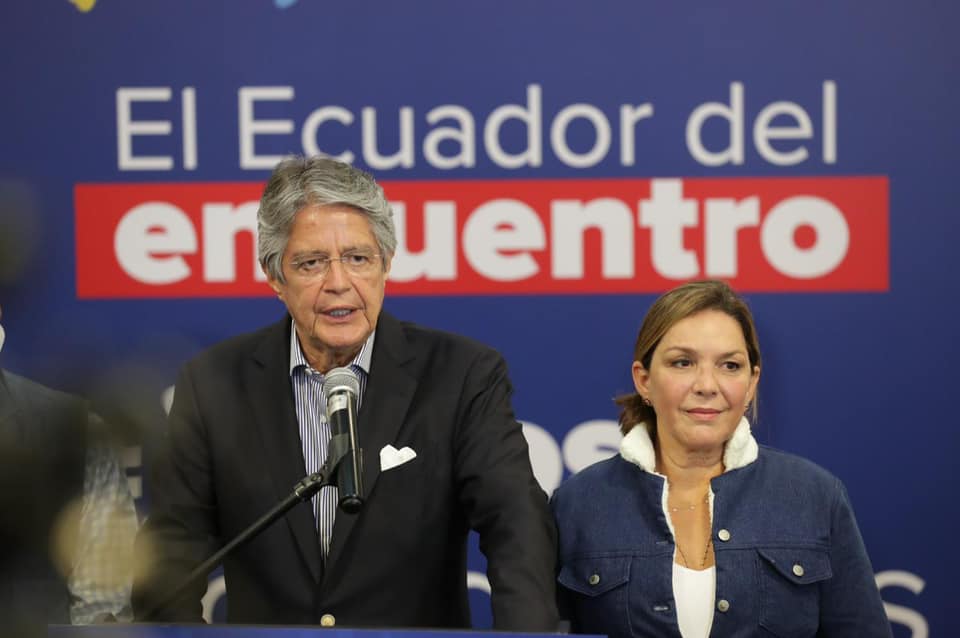The second round of Ecuador’s presidential election has produced a victory for the right-wing candidate, the banker Lasso, and a defeat for the left-wing candidate, Andrés Arauz. It is important to try to understand the reasons why this happened, and the perspectives for the workers’ movement in the Andean country.
With over 99% of the votes counted, Lasso received 4.6 million (52.36%) while Arauz received 4.2 million (47.64%). Arauz had won the first round of the presidential election with more than 32% of the vote, while Lasso had struggled to enter the second round with only 19%.
In the second round, Arauz managed to hold on to the provinces he had won in the first round, receiving the vote of workers and poor in the coastal areas and managing to win the country’s most populous city, Guayaquil. However, he was badly beaten in the capital Quito, and crucially in the Andean and Amazonian provinces, which have the highest concentrations of indigenous people.
 Results of the second round of Ecuador's presidential elections broken down by province / Image: David C. S.
Results of the second round of Ecuador's presidential elections broken down by province / Image: David C. S.
There are several factors that explain the victory of the oligarchy’s candidate, Lasso. The capitalist media waged a campaign of demonisation against Arauz, with all sorts of allegations and unfounded accusations being thrown at him. That was to be expected and should be taken as read.
In reality, one of the key factors was the transfer of the vote for Yaku Perez in the first round. Pérez presented himself as the indigenous candidate and stood as the Pachakutik candidate, which is formally the political wing of the CONAIE, the mass indigenous peasant organisation. Pachakutik took an official position of calling for a spoilt ballot (null vote) in the second round. This led to divisions in the ranks of CONAIE, with its president, Jaime Vargas, coming out publicly in favour of a vote for Arauz.
In the end, it is clear that a significant part of the vote Pachakutik received in the first round (1,798,057) became spoilt ballots in the second round. In the first round there were 1,013,395 null votes. In the second round, there were 1,757,575, an increase of 744,180. The overwhelming majority would have been Pachakutik voters. Since the difference between Lasso and Arauz was 420,000 votes, it is clear that Pachakutik’s call for a null vote in the second round made the difference between a victory for Lasso and a victory for Arauz.
An analysis of the results in the Andean and Amazonian provinces which Yaku Perez won in the first round by a big margin (40 to 50% of the vote) and where Lasso did badly (receiving between 11 and 17% of the vote), shows how all of them were won by Lasso in the second round, by substantial margins (50 to 60%). This would indicate that about 30% of the Pachakutik vote went to null vote in the second round, and the remainder went mainly to the right-wing candidate Lasso.
 The results of the first round of the presidential election, broken down by province / Image: David C. S.
The results of the first round of the presidential election, broken down by province / Image: David C. S.
How can this be explained?
During the presidency of Rafael Correa, of the Citizens’ Revolution, there were confrontations between the CONAIE and Correa’s government. Mistakes, blunders and incorrect policies on the part of the government were met with opposition by the indigenous movement. The government responded with repression, creating a powerful rift between the leadership of CONAIE, which adopted an extremely sectarian stance, and correísmo. The indigenous leadership participated in the undemocratic manoeuvres of the ruling class against Rafael Correa and the judicial persecution of the leaders of the Citizens’ Revolution. This went as far as Yaku Perez – who was also the Pachakutik candidate in the 2017 election – scandalously calling for a vote for the right-winger, Lasso, in the second round of the 2017 presidential election, against the correísta candidate. Later on, the leaders of Pachakutik collaborated with Lenín Moreno once he had broken with Correa and made a deal with imperialism.
Even during the October 2019 uprising, the sectarianism of the CONAIE leadership led them into a trap and into betraying the movement. When accused by the government of wanting to overthrow it as part of a plot by Correa, in their haste to distance themselves from him they responded by saying that they did not want to overthrow the government. This was at a time when the masses were on the streets against the government, when several had died, and when the slogan on the streets was “Moreno Out!” By refusing to undertake the task of overthrowing the Moreno government, the leaders of the CONAIE ended up signing a deal with it, which in reality was a betrayal of the movement.
Yaku Pérez represents the right wing of CONAIE and Pachakutik. During the campaign, he was at pains to distance himself from the October 2019 uprising. In the aftermath of the first round, when it was not clear whether he or Lasso would go to the second round against Arauz, he openly flouted the idea of an alliance between the right-wing Lasso and Pachakutik, in a common front against Arauz and correísmo. Worse still was the position of Yaku Perez’s running mate, Virna Cedeño, who openly called for a vote for Lasso in the second round “to stop socialism of the 21st century.” This idea of a joint front with the open candidate of the oligarchy would have been met with widespread rejection by the ranks of the CONAIE, which had just participated in a mass uprising in October 2019 against the policies Lasso represents.
Several leaders of CONAIE, including Leonidas Iza, came out publicly against any alliance with or support for the right-winger, Lasso. Others, like Jaime Vargas, went further and called for a vote for Arauz in the second round. As a result, he has been expelled from Pachakutik.
Thus, we have arrived at a situation where the leaders of Pachakutik have clearly misrepresented the interests of the indigenous people, overwhelmingly poor peasants and workers, and have allowed the candidate of the capitalist oligarchy to come to power.
What are the perspectives for a Lasso government? The ruling class, having won a narrow victory, will now feel confident and emboldened to implement their policies, a continuation of those of the Lenín Moreno government. Furthermore, the economic situation has been worsened by the impact of the pandemic and the capitalist crisis. This will be a government of cuts, attacks against the working class, and submission to imperialist interests.
However, this will not be a strong government. The parties which supported Lasso (PSC and CREO) only had 21 members of parliament elected to the National Assembly, representing just 15% of the total. Meanwhile, Arauz’s party UNES has 48 deputies, and Pachakutik a further 27. Together they would have an overall majority in the Assembly.
 The leadership of Pachakutik have clearly misrepresented the interests of the mass of indigenous people, who are overwhelmingly workers and peasants, and who participated in the mass uprising in October 2019 / Image: public domain
The leadership of Pachakutik have clearly misrepresented the interests of the mass of indigenous people, who are overwhelmingly workers and peasants, and who participated in the mass uprising in October 2019 / Image: public domain
It will not be long before the workers and peasants are forced to come out on the streets to fight against Lasso and his policies. That struggle, like in October 2019, will be carried out by the masses of workers and peasants, many of whom voted for Arauz, and many of whom voted for Pachakutik. It is imperative that the most advanced activists in the movement draw the necessary lessons from the experience of the recent period.
The lesson of the Correa government is that it is not possible to rule in favour of the majority of workers and peasants within the limits of capitalism. Correa benefited from a period of high mineral and energy prices, but once that period was over the limitations of his policies were revealed, and his government lost support.
The lesson of the October uprising is that once the masses are on the streets challenging for power, the job cannot be left half-done. They have to go all the way through by establishing a government of the workers with the support of the broad masses of poor peasants.
The lesson of the election of Lasso is that workers and peasants can never, under any circumstances, support – by action or omission – the candidate of the capitalists, because he will, invariably, apply a policy for the ruling class at the expense of the oppressed.

